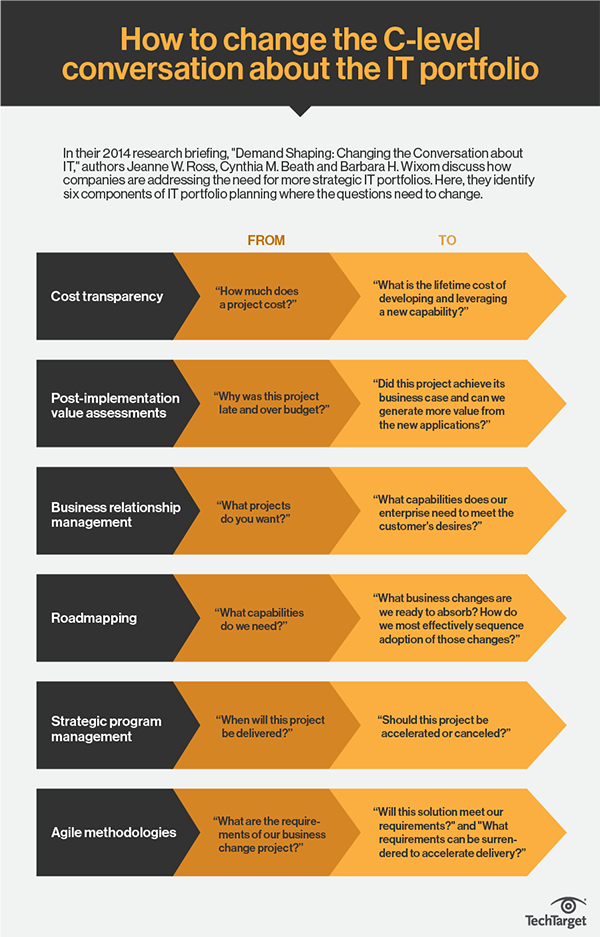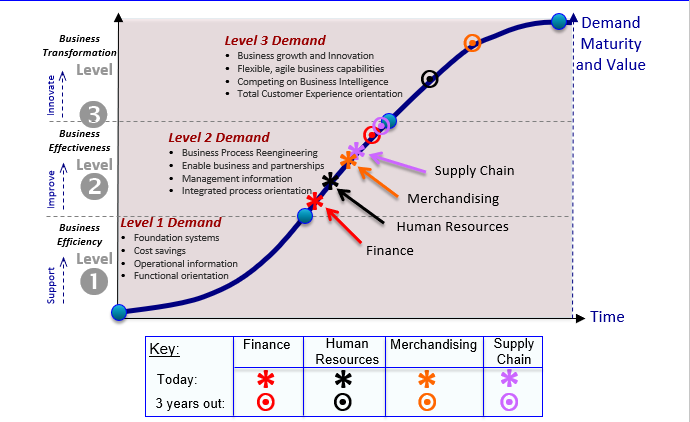Why Is Demand Shaping Imperative in Digital era?
According to Jeanne W. Ross, director of MIT’s Centre for Information Systems Research (CISR) Demand Shaping is a process of ongoing negotiation and learning about a company’s most valuable and achievable business change opportunities.
According to BRMP the Demand Shaping Discipline stimulates, surfaces and shapes business demand for Provider services, capabilities, and products. Identifying possible risk and compliance issues upfront is an essential part of Demand Shaping. Business awareness is key to being able to deliver safe business solutions. Often risk and compliance discovery comes too late or not at all in the demand shaping process. The BRM needs to educate the Business Partner and the Provider on the value of effective Risk and Compliance Management.
Purpose of Demand Shaping
In this age of Digital era demand, shaping is imperative and it is easier said than done. Companies like Charles Schwab Corp and Staples both of which were once industry disruptors and are now being disrupted.
Tom Conophy, CIO of Staples says, Amazon has disrupted retail significantly through pervasive technology, self-education, and low-cost delivery. So a deep understanding of how to apply IT strategically is critical to business survival.
How is Demand Shaped?
Business KPIs are a primary driver of shaping business demand and business value results. BRMs need to ensure they exist in the line of business (or business partner) level. This done through direct conversations with your business partners by asking, “Do they exist? Do you have KPIs that you use to measure success?” If not, then you should facilitate a session with your business partner to define 3 – 6 KPIs that really move the success needle for their areas. You will then leverage these in-demand shaping, prioritization, and value management efforts.
We have to change the conversation that takes place leading up to the decisions.

The Goal of these ongoing negotiations between Shared service providers ( IT, HR, Finance) and business is to develop a prioritized list of business capabilities that give the company a competitive edge. It is about realizing the company’s most valuable and achievable business opportunities,”
Demand shaping hinges on cost transparency, by doing a cost analysis of all products and services we can show business colleagues what their technology services are costing them
Assessment and Measuring
Business Demand Maturity represents a Business Unit’s appetite for Information Technology (IT) and their ability to realize business value from Information and IT assets and capabilities. The assessment, and its annual update, provides context for our providers (HR, Finance, Facilities, strategic external providers) for our converged enterprise Strategic Planning.
| BRM Aspiration | Measure |
| Selection of opportunities that optimize value to the Business Partner | Return on Investment (ROI)
Magnitude of contribution enabling strategic goal achievement |
| Overall portfolio risk is within acceptable tolerance levels | Portfolio Risk Score |
Solution
Shaping demand is not as easy as it sounds. It involves a little bit sales skills, a little bit of influence, and a big splash of corporate strategy and data. Also, the BRM’s ability to shape demand will also be either enhanced or hampered by BRM maturity.
However, the most likely reality is that working in a less mature BRM environment, meaning that you are responsive and reactive rather than planning based on the roadmap and key activities each year.
Tips for improving trust and moving up the scale of BRM maturity:
- Develop business partner relationships and foster trust in what you deliver.
- Look for quick wins to deliver quickly and build trust—look at their pain points and see what you can do quickly to remove some of that pain.
- Develop relationships inside your supply area—it can help when you are trying to get that quick win across the line!
The BRM works with their Business Partners to shape business demand for Provider products and services for the highest possible value given Provider constraints. The BRM contributes to crafting a business strategy that fully exploits Provider capabilities and emerging technologies. As initiatives are being prioritized, the BRM facilitates conversations with the Provider to build a Business Capability Roadmap that enables business strategy. Part of shaping demand includes ensuring that Business Outcomes and Key Performance Indicators (KPIs) are established, and working with the business defining the initiative value that will be returned from a program or project over the time horizon aligned to the KPIs. BRMs also create Value Management Plans that include value realization after the program or project is deployed.






